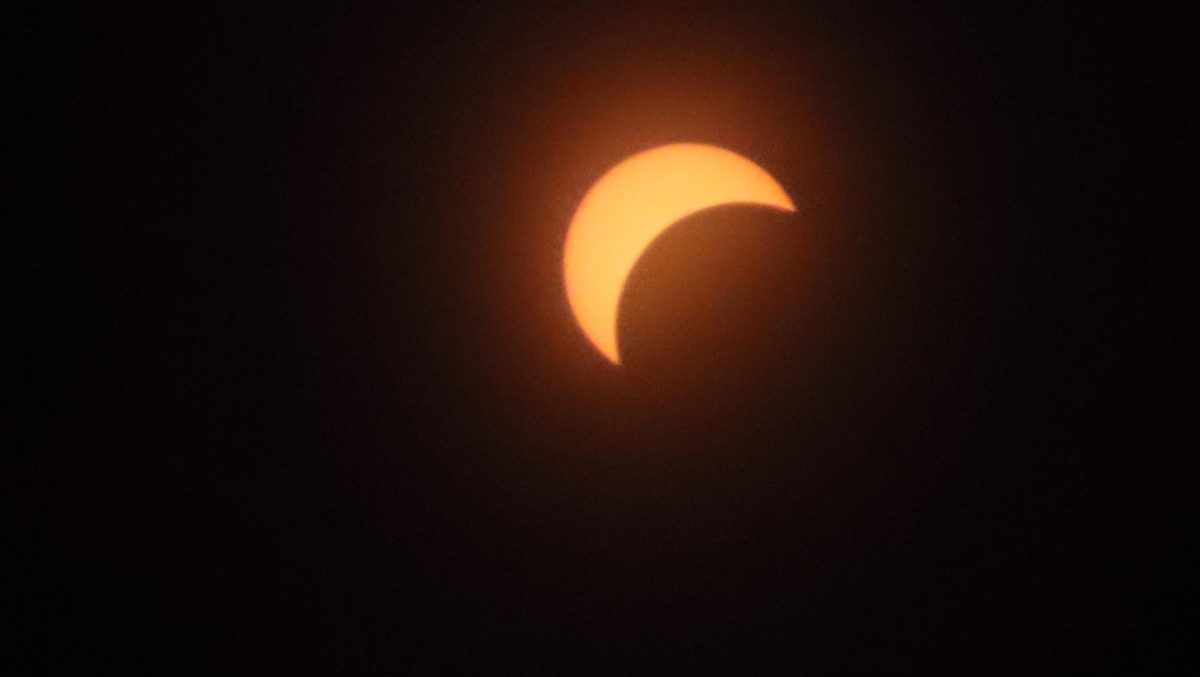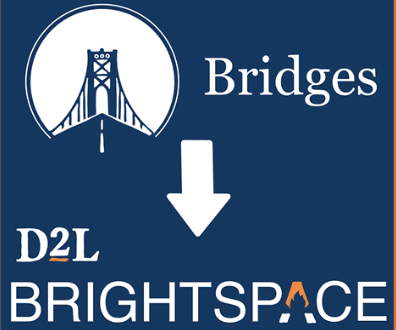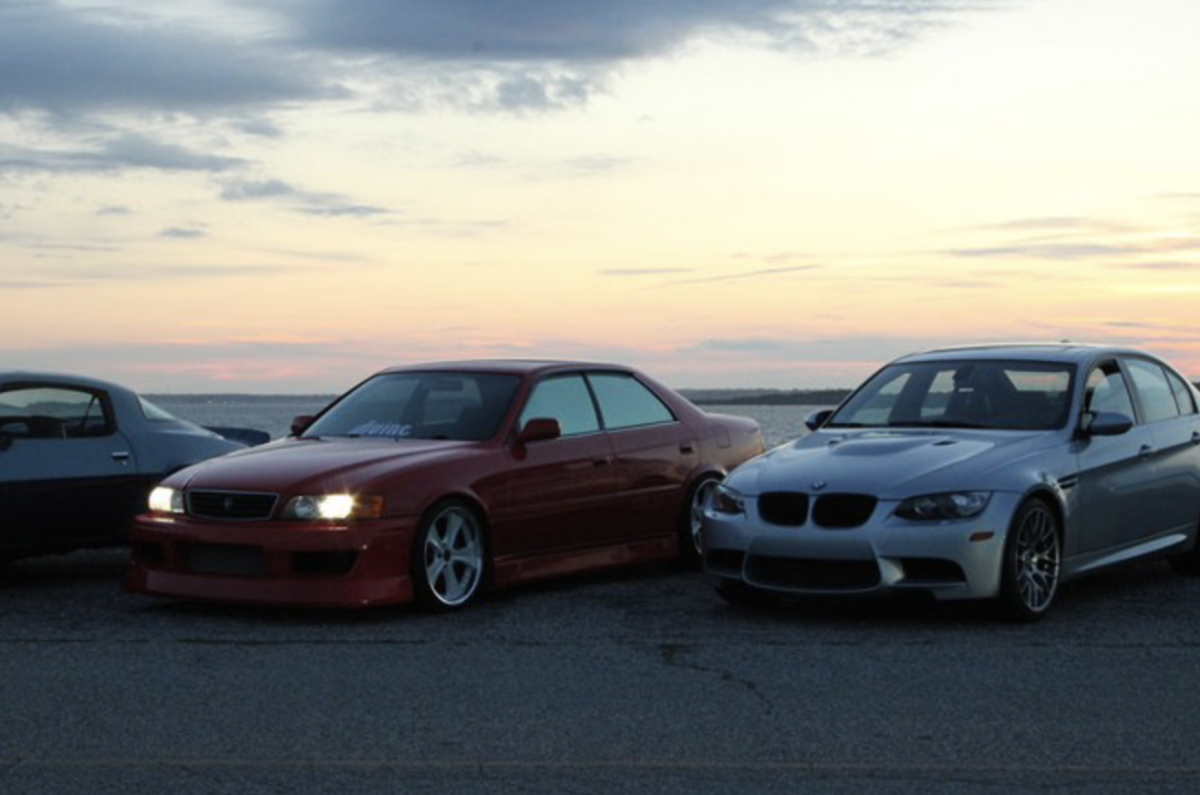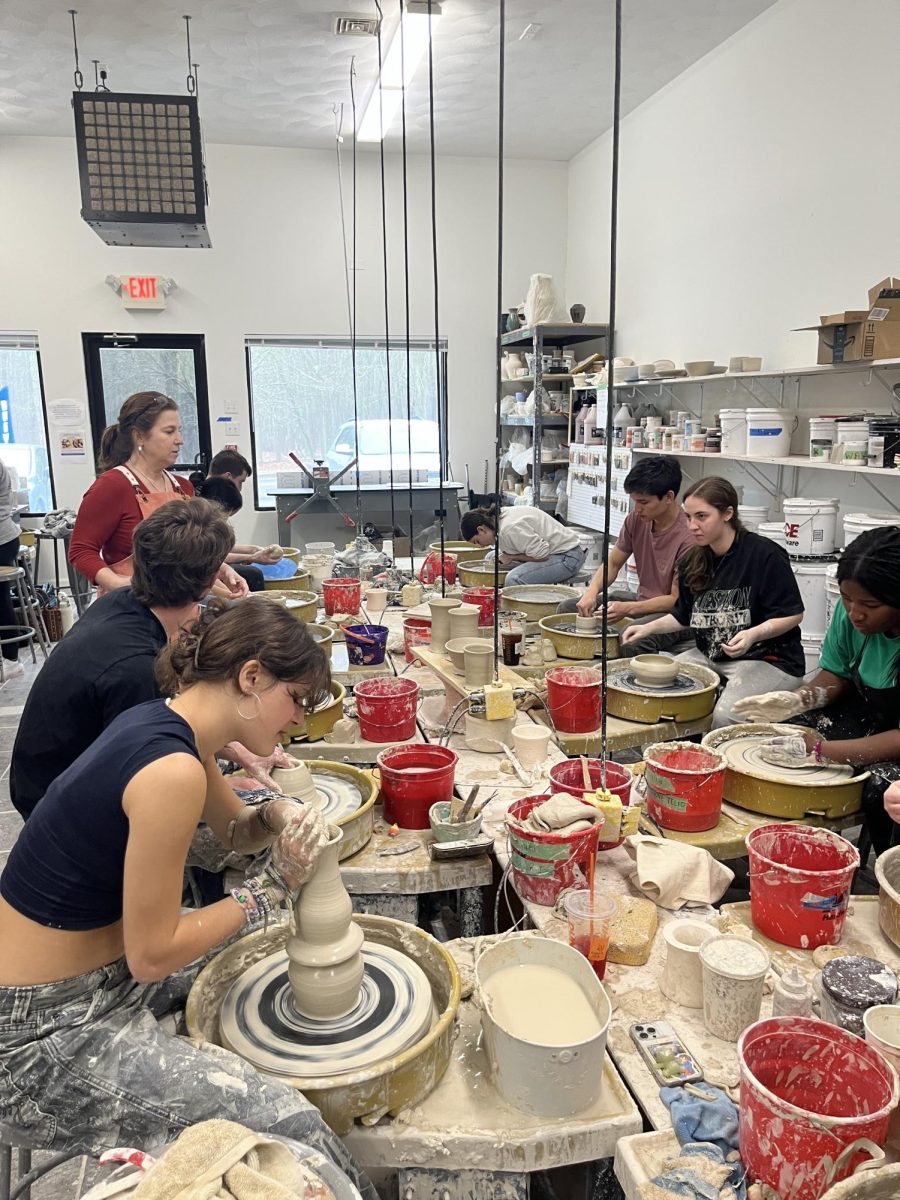On Monday, April 8, a total solar eclipse occurred when the Moon passed between the Sun and Earth, blocking the Sun’s face completely. The eclipse was visible from over 15 US states between 2 pm to 4 pm. At RWU, we had approximately 92% visibility, which allowed students to observe a partial eclipse. During the eclipse, the Moon covered most but not all of the Sun. To celebrate this event, a party was co-hosted by the Tutoring Center, SPLO and the Department of Mathematics and Physics on the D’Angelo Common, with music by WQRI. When asked why the Tutoring Center decided to help host, Director Karen Bilotti said, “Part educational, part fun – that’s tutoring!” The opportunity for community building was a big draw for the Tutoring Center as well.
Students who were interested in watching the eclipse were provided with solar eclipse glasses, and tickets for the Sarcastic Sweets Food Truck were also available. Unfortunately the solar eclipse glasses ran out fast, as did the food available. “We started with about a thousand [pairs of glasses]. We were out very quickly. The line was down past the engineering building,” said Tracy McDonnell Wysor, the Assistant Director of the Tutoring Center.
The last solar eclipse that was visible within the US was back in 2017, but before that, it had been nearly four decades since a solar eclipse was seen from US soil. During the recent solar eclipse, the path crossed more major population centers than the 2017 eclipse, which enabled 31.6 million people to see the eclipse without leaving their city, versus just 12 million in 2017. However, here at RWU, the 2017 eclipse was only 65% visible. During the 2017 eclipse, the longest period of totality was experienced near Carbondale, Illinois, with totality lasting only 2 minutes and 42 seconds. For the upcoming 2024 eclipse, totality will last up to 4 minutes and 28 seconds, for those who are in the center of the totality path.
The recent eclipse was a once-in-a-lifetime experience that many people here at RWU got to enjoy and will be remembered for years to come.







